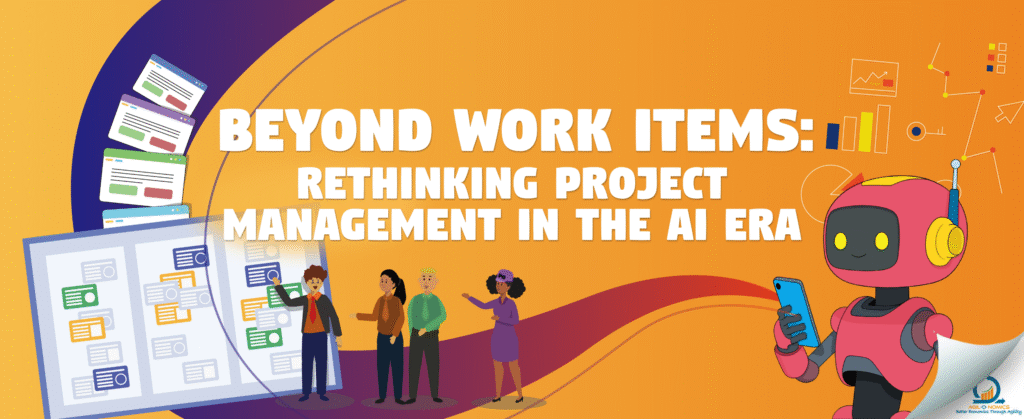
For decades, project management has relied on one central artifact: the work item. Tasks, stories, or issues get broken down, logged, and tracked across boards and workflows. This approach gave teams visibility and structure, but it also created a heavy reliance on manual updates. Today, with the rapid rise of AI, we have to ask: do we still need to manage every piece of work through static items, or is there a smarter way to organize and deliver?
Supercharging Teams Beyond Status Updates
Work items were never the real goal. They were meant to create alignment, ensure nothing slipped through the cracks, and provide leaders with a sense of progress. Yet in many teams, they became a chore—filled out reluctantly, updated inconsistently, and checked more for compliance than collaboration.
This is where AI in project management changes the equation. Conversations can now be transcribed and tagged automatically. Meeting insights can be converted into action items without manual input. Dependencies can be spotted in real time. Instead of relying on work items as the only source of truth, teams can lean on intelligent systems that update themselves.With this shift, teams move from administrating work to delivering value. A team supercharged by AI spends less time maintaining boards and more time focusing on outcomes. The conversation shifts from, “Did you update the work item?” to, “What do we deliver next?”
A Process That Actually Works

Some may wonder: without work items, how do we keep structure? The reality is that work items alone never guarantee a good process. They reflected it—or revealed the lack of it.
A process that works in the AI era is less about rigid artifact management and more about seamless coordination. Intelligent tools can surface patterns, highlight risks, and provide reminders when needed. Leaders can shift their energy from monitoring updates to guiding direction. Teams gain back time for collaboration that creates real impact.
The key is moving from work-item-driven project management to outcome-driven project management. That means:
- Priorities are clear without needing to cross-check multiple tools.
- Workflows adapt to change instead of forcing rigid compliance.
- Reflection and learning happen continuously, not as a rushed formality.
The Future of Technology and Tools
If work items shaped the last generation of project management, AI-powered platforms will shape the next. Tools are no longer passive repositories of information; they are becoming active partners in execution.
Picture a platform that:
- Suggests the best person for a task based on skills and workload.
- Flags blockers automatically from chat or meeting transcripts.
- Highlights impediments that are slowing the team down
- Identifies dependencies before they derail progress.
- Summarizes progress without anyone logging updates.
This isn’t far-off speculation—it’s already happening. The question is whether leaders will continue to center their processes on manual work items or embrace tools that extend human capability.
Technology, however, is not a substitute for leadership. No system can create trust, resolve conflict, or set vision. Servant Leadership and leaders who empower rather than control will make a huge difference on how effective are your AI tools
So, while AI tools work to remove administrative drag and provide clarity at scale, leaders and teams will get the space to focus on the human side of project management.
What We Stand to Gain

So, do we really need work items anymore? Not in the way we once did. They may still serve compliance or large-scale coordination needs. But as AI reshapes project management, the reliance on static work items will shrink.
What emerges instead is a more natural rhythm of work:
- Teams supercharged to focus on outcomes.
- Processes that work because they adapt, not because they constrain.
- Tools that reduce friction instead of multiplying it.
The real shift is not about abandoning structure but about reimagining project management with AI as an enabler. The future will not be measured by how many work items a team closes, but by how effectively they deliver value to the people they serve.

